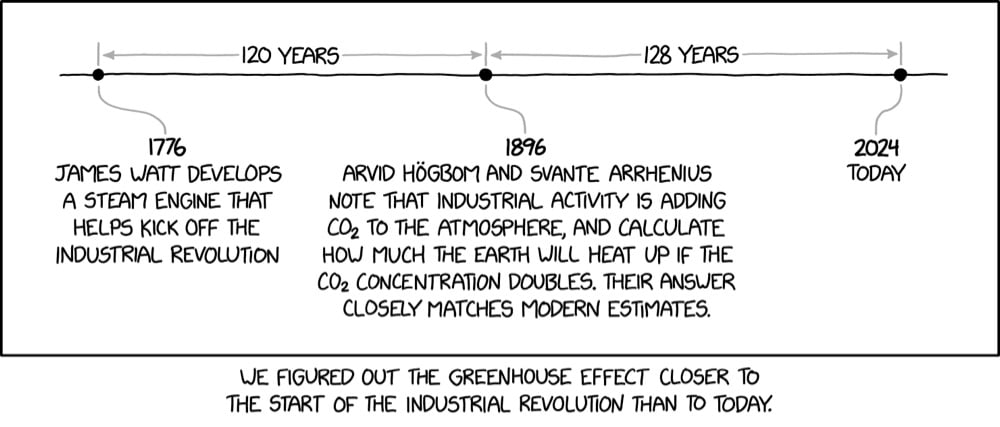Our Missed Head Start on the Climate Crisis

In 1896, scientists determined that industrialization was adding CO2 to the atmosphere and quantified how much it would warm the Earth. That date is closer to the start of the Industrial Revolution than to the present day.
If you’re wondering, like I did, about that 1896 date — what about Fourier and Pouillet and Tyndall and Eunice Foote? — the Wikipedia pages on the history of the discovery of the greenhouse effect and the history of climate change science are worth a read.
The warming effect of sunlight on different gases was examined in 1856 by Eunice Newton Foote, who described her experiments using glass tubes exposed to sunlight. The warming effect of the sun was greater for compressed air than for an evacuated tube and greater for moist air than dry air. “Thirdly, the highest effect of the sun’s rays I have found to be in carbonic acid gas.” (carbon dioxide) She continued: “An atmosphere of that gas would give to our earth a high temperature; and if, as some suppose, at one period of its history, the air had mixed with it a larger proportion than at present, an increased temperature from its action, as well as from an increased weight, must have necessarily resulted.”
Foote’s paper went largely unnoticed until it was rediscovered in the last decade. If you’re interested, the best thing I’ve read on the history of climate change is the 7th chapter of Charles Mann’s The Wizard and the Prophet.





Stay Connected